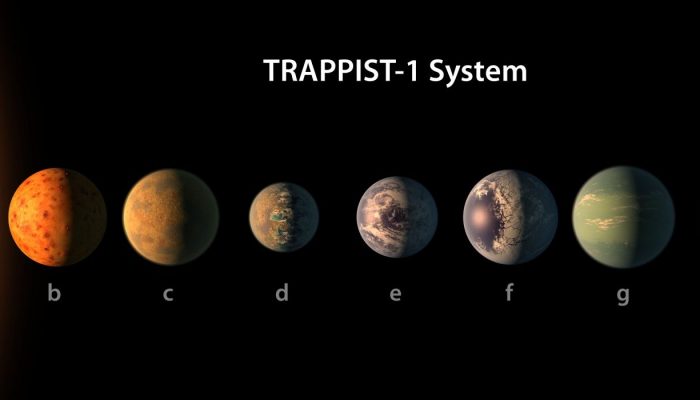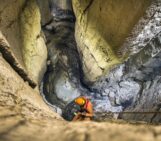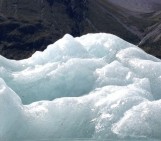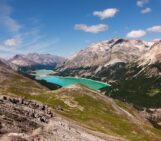
Drawing inspiration from popular stories on our social media channels, as well as unique and quirky research news, this monthly column aims to bring you the best of the Earth and planetary sciences from around the web.
Major story
Undoubtedly the story of the month is the discovery of a star system of seven Earth-sized planets just 40 light-years away from our own. What makes the finding so exciting is that three of the planets lie in the habitable zone. All could have oceans and atmospheres, making them good candidates to search for extraterrestrial life.
The seven Earth-sized worlds orbit the ultra-cool dwarf star, TRAPPIST-1, which has been known to astronomers for some time. As the planets passed in front of TRAPPIST-1, the star’s light output dipped. Using a combination of ground and spaced based telescopes, the changes in the light output were used to detect the planets and gather information about their size, composition and orbit, explains the press release by the European Southern Observatory.
This simple GIF by New Scientist illustrates the principle of how the remarkable planets were found (while at the same time highlighting the fact there is a mind-blowing number of exoplanets scattered throughout space!).
The ultra-cool dwarf star and its planetary system has an even cooler website, which comes complete with great posters, videos, short stories, poems and graphic novels; as well as a detailed timeline of all the years of work which took place behind the scenes and culminated in the announcement made earlier this month.
Our top pick for a science poem honouring the discovery is In Search of New Life by Sam Illingworth, a lecturer at Manchester Metropolitan University. You can also find an audio version of the poem here.
Far into space, amongst the darkest Sea
New planets sit like marbles in a row.
We turn our eyes to find out what might be
And search for patterns in their ether’s flow;
Then try to see what else might lie below.
And as we probe how life’s rich web was spun,
Do they look back towards our distant sun?
What you might have missed
The discovery of a previously unknown continent below New Zealand and New Caledonia dominated headlines towards the middle of the month.
Dr. Mortimer, of GNS Science and lead author of the study, argues that “being more than 1 million square kilometers in area, and bounded by well-defined geologic and geographic limits, Zealandia [the name given to the newly discovered continent] is, by our definition, large enough to be termed a continent.”
But without an official authority which designates the existence of continents, it will be for the broader scientific community to recognise Zealandia as one. And the jury is still out, as Alex Witze finds in this Nature News & Comment article:
“Claiming that Zealandia is a continent is a bit like stamp collecting,” says Peter Cawood, a geologist at Monash University in Melbourne, Australia. “So what?”
While the (potentially) new Antipodean continent dominated headlines, you might have missed the discovery of another lost continent. Deep under the waters of the Indian Ocean, sandwiched between Madagascar and India, lie the scattered pieces of an ancient, drowned, microcontient called Mauritia. The authors of the study, published earlier this month in Nature Communications, dated zircons of up to 3 billion years old from Mauritanian volcanic rocks. Considering Mauritania is much younger, the researchers argue the zircons must have come from another, already existing continent.
Meanwhile, in the southern-most reaches of our planet, a huge iceberg is set to breakaway from the Larsen C Ice Shelf, on the northeastern coast of the Antarctic Peninsula. A large crack in the ice was spotted in natural-colour satellite imagery captured by NASA back in August 2016. Int January 2017 alone, the crack grew by more than 10 km in length and now stretches 175 km over the ice.
British Antarctic Survey (BAS) scientists recently captured footage of the huge crack. The video highlights what the calving of such a large iceberg might mean for the Larsen C ice shelf, while this Nature News and Comment story highlights how far glaciology has come since similar calving events in the 90s and 00s. Scientists now have a much better understanding of what might happen in the weeks and months to come.
Five links we liked
- With January 2017 declared as the third-warmest January on record, take this National Geographic quiz to find out how well you understand global warming.
- Who dominates the conversation about climate change on Twitter? It’s not scientists! Experts tweet using technical language that is not picked up by keyword term searches and so miss out on broadly influencing the conversation about climate change online, finds a study carried out by Right Relevance on behalf of Carbon Brief.
- Astronaut Chris Hadfiled (@Cmdr_Hadfield) talks about why we should take the threat of celestial rocks seriously following the announcement that June 30th is Asteroid Day 2017.
The EGU story
After long-awaited snowfall in January, parts of the Alps are now covered with fresh powder and happy skiers. But the Swiss side of the iconic mountain range had the driest December since record-keeping began over 150 years ago, and 2016 was the third year in a row with scarce snow over the Christmas period. A study published this month in The Cryosphere, a journal of the European Geosciences Union, shows bare Alpine slopes could be a much more common sight in the future.
The new research, by scientists based at the Institute for Snow and Avalanche Research (SLF) and at the CRYOS Laboratory at the École Polytechnique Fédérale in Switzerland, shows that the Alps could lose as much as 70% of snow cover by the end of the century. However, if humans manage to keep global warming below 2°C, the snow-cover reduction would be limited to 30% by 2100.
And don’t forget! To stay abreast of all the EGU’s events and activities, from highlighting papers published in our open access journals to providing news relating to EGU’s scientific divisions and meetings, including the General Assembly, subscribe to receive our monthly newsletter.



